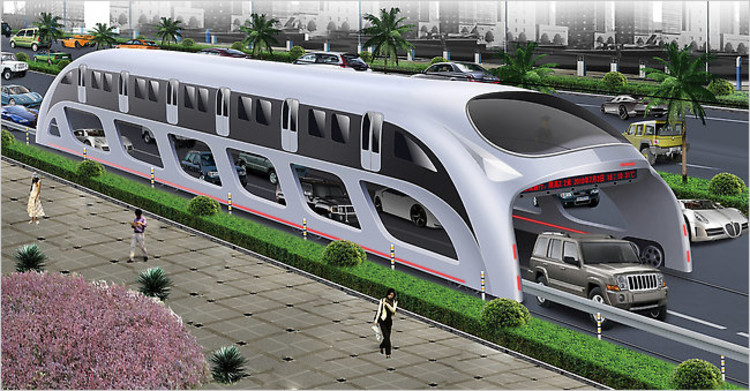
There are few things that are more annoying than sitting in bummer to bummer traffic. Yet, as cities are expanding at rapid rates, our infrastructure simply cannot support the number of people, and so congestion becomes an every day obstacle we have to face. As Bettina Wassener reported for the New York Times, for one China-based company, Shenzhen Huashi Future Parking Equipment, the vicious cycle of a growing population which leads to more vehicles – and hence, more traffic – needed to be addressed. And, along came their super functional, extra-wide (20 ft) and extra-tall ‘Straddling Bus’. The vehicle runs along fixed tracks and its main compartment is elevated to leave the street clear for cars driving underneath. Plus, the vehicle is partially powered by the sun via panels on the roof and at bus stops.
More about the Straddling Bus after the break.
It is estimated that the vehicles, which hold up to 1,200 passengers each and travel at 40 kilometers per hour, will reduce traffic jams by 25-30% on main roads. The cost of construction for one bus and 25 miles of route facilities is around $7.4 million – one-tenth the cost of building a subway line of the same length!
According to the Times, Youzhou Song, the vehicle’s designer said, “The straddling bus could replace up to 40 conventional buses, potentially saving the 860 tons of fuel that 40 buses would consume annually, and preventing 2,640 tons of carbon emissions.”

A pilot project for the vehicle is in the works in Beijing, a city that is motivated to reduce carbon emissions dramatically.

